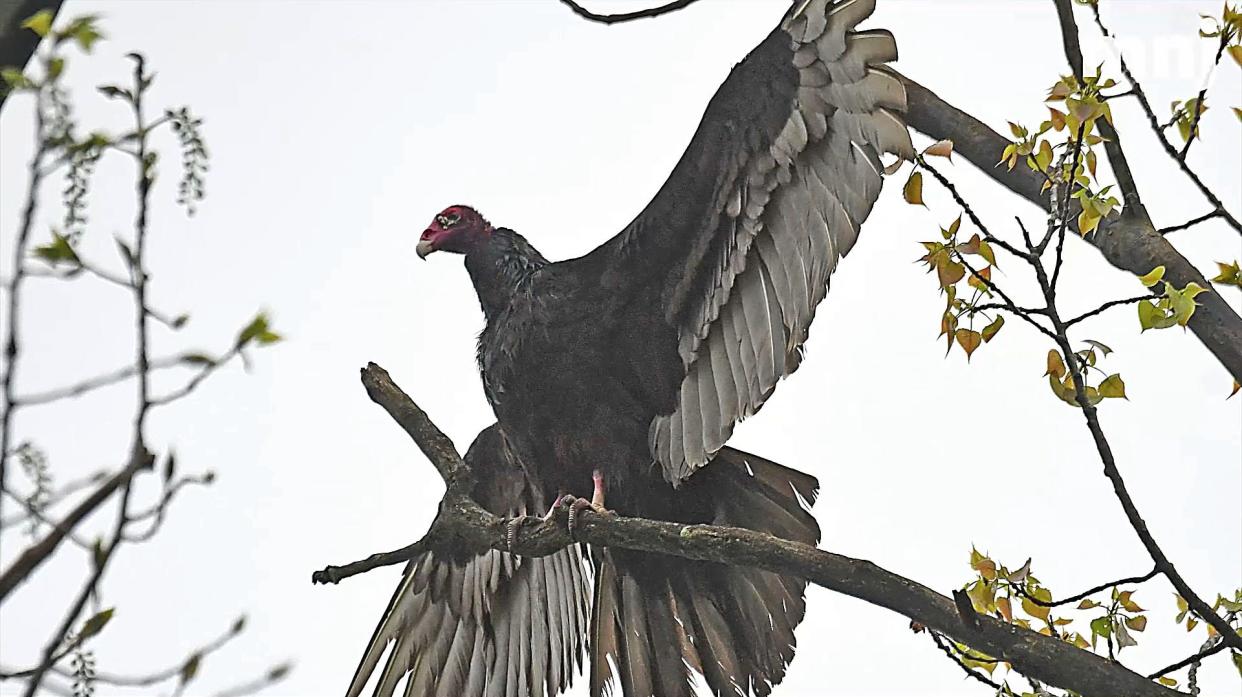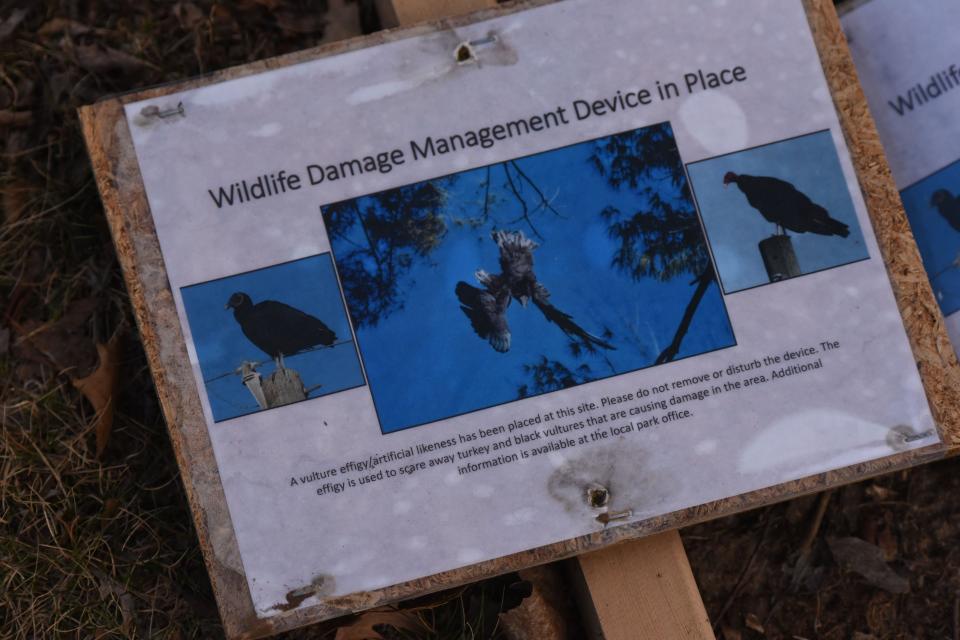Scary sight: Vulture effigies meant to deter nuisance birds at Charles Mill Lake

MIFFLIN — At least two black vultures are hanging in effigy at Charles Mill Lake, but there's nothing sinister or macabre going on at the park.
A sign underneath says: "A vulture effigy/artificial likeness has been placed at this site. Please do not remove or disturb the device. The effigy is used to scare away turkey and black vultures that are causing damage in the area."
"It's just a manner to deter them," said Steven Rice, park manager.
More: Business briefs: KOA awards, Charles Mill Marina, Firelands Electric and more
In Ohio, there are two types of vultures, turkey vultures and black vultures. Both are scavengers and feed on a variety of dead animals.
Black vultures are considered nuisance birds, according to the Ohio Department of Natural Resources.
Smaller and more aggressive than turkey vultures, black vultures have been witnessed attacking newborn calves. Vultures will strike during the birth process, or shortly after birth, by attacking the eyes, nose and other soft tissue of newborn calves, according to ODNR.
In some cases, the adult cow is also injured during these assaults, sometimes to the point of causing death.
More: Body pulled from Charles Mill Lake early Saturday morning
Rice said black vultures also are destructive.
"They'll pick at the roofs of campers," he said. "They'll eat the foam from car seats."
Black vultures' range and population numbers have expanded since the 1980s, resulting in increased property damage, livestock and pet depredation, and aircraft collisions.
In Ohio, the No. 1 request to the U.S. Department of Agriculture’s Wildlife Services for help with black vultures is for livestock depredation. These requests doubled from 2012 to 2015, and black vultures continue to threaten livestock producers throughout Ohio.
Rice said a person has to get a permit from U.S. Fish and Wildlife Services to kill a black vulture. He said at least one of the effigies at Charles Mill has been there for several months.
News Journal subscribers make this coverage possible. Support our work and get a special offer of 6 months for just $1 ($9.99 a month after) at offers.mansfieldnewsjournal.com/specialoffer.
"It seems to have worked pretty good," Rice said.
One vulture is hanging on a tree by the marina, while another is near the Frisbee golf course.
According to the USDA National Wildlife Research Center's Florida field station, proper placement is the single most important aspect in successfully using an effigy to disperse vultures.

The factors include the following:
• Locations with the highest bird activity or use.
• Visibility of the effigy to birds coming in to roost.
• Prominent branches or support structures.
• Accessibility to the site.
An effigy should resemble that of a dead bird hung by its feet with one or both wings hanging down in an outstretched manner.
An effigy can be a carcass, taxidermist preserved mount, or a replica.
mcaudill@gannett.com
419-521-7219
Twitter: @MNJCaudill
This article originally appeared on Mansfield News Journal: Charles Mill Lake Park using black vulture in effigy to deter birds

